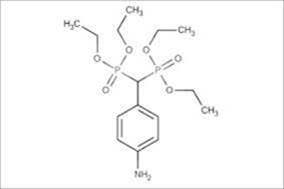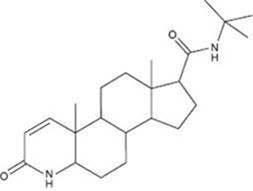Merck & Company and Big Pharma’s Nefarious Search for Profits
TRANSCEND MEMBERS, 17 Dec 2018
Gary G. Kohls, MD | Duty to Warn – TRANSCEND Media Service
An Example of how a Small-Town German Apothecary Shop Morphed into a Greedy Multinational Corporation that Disregards Ethical Principles
“Investigators on research teams should discontinue the research if, in their judgement, the outcome of the research might turn out to be harmful to the individual.”
— An interpretation of the Declaration of Helsinki: Recommendations for Conduct of Clinical Research
“It is not an acceptable excuse to say: ‘I was just following my superior’s orders.'”
– Principle IV of the Nuremburg Principles
“When an activity raises threats of harm to human health or the environment, precautionary measures should be taken even if some cause and effect relationships are not fully established scientifically. In this context the proponent of an activity, rather than the public, should bear the burden of proof. The process of applying the precautionary principle must be open, informed and democratic and must include potentially-affected parties. It must also involve an examination of the full range of alternatives, including no action.”
– Wingspread Statement on the Precautionary Principle, Jan. 1998
“The process by which a patient learns about and understands the purpose, benefits, and potential risks of a medical or surgical intervention (including clinical trials) and then agrees (or refuses) to receive the treatment or participate in the trial.”
– The Principle of Informed Consent
“First do no Harm.”
– Summary of the Hippocratic Oath
“The Bigger they are, the Harder They Fall”
– English Proverb_
************************
One of the oldest and biggest pharmaceutical companies on the planet is New Jersey-based Merck & Company (known outside the US as MSD – short for Merck, Sharp & Dohme). Merck was once a German company (now international, with its head offices in the US) that is, technically speaking, 350 years old this year. Given its recent stock prices, it is having a happy birthday year ($55 per share last spring and $80 per share a few days ago).
Merck & Co was born when Friedrich Jacob Merck bought a small apothecary shop in Darmstadt, Germany in 1668. Friedrich’s shop sold the usual items of his era, including tobacco, wine, spices, herbal “remedies” and any other products that his customers regarded as potentially healing agents. Apothecaries were the precursors of modern-day pharmacies. The owners frequently dispensed medical advice, although they were not licensed physicians.
In 1827 – a century and a half later – one of Friedrich’s heirs, Heinrich Emmanuel Merck, converted the pharmacy into a drug manufacturing facility – and the rest, as they say, is history. Among the first products that Merck manufactured and marketed were the highly-addictive substances cocaine and the two early natural opioids, morphine and codeine. They were all over-the-counter drugs at the time.
Interestingly, Viennese psychiatrist Sigmoid Freud had a Merck connection in that he helped promote their cocaine drug when Sigmund discovered that the drug was a powerful “anti-depressant” (or at least it made him “euphoric” or capable of causing a predictable drug-induced mania). Freud’s support lasted only until the day he realized how addictive Merck’s cocaine turned out to be.
Addictive substances that relieve pain, sadness, fatigue, insomnia or just temporarily improve mood have always been great money-makers for businesses like Merck (and every other Big Pharma seller of every drug that is difficult to stop because of the withdrawal effects). Those businesses have learned the lessons well. The huge variety of prescription drugs that are dependency-inducing include every 1) opioid pain pill; every 2) tranquilizer; every3) sleeping pill; every 4) benzodiazepine; every 5) SSRI; every 6) ADHD drug; every 7) psycho-stimulating drug; every 8) dopamine-releasing weight loss drug, and every 9) dopamine-stimulating appetite suppressant drug. Over the past century Merck and every one of their cohorts in crime have developed and marketed innumerable addictive drugs that they then falsely claimed were not addictive when they launched the product.
<<<Putting Patients First>>>
Merck, once a small relatively ethical drug company that once had as its motto “Putting Patients First”, has invented, manufactured and marketed examples of every category of dangerous drug listed above and below, but so has every other Big Pharma corporation on the planet, with frequently disastrous results. What should bother anybody who has an appetite for justice, is that there have been no sincere apologies from any of them, even when they have been forced to fork over millions of dollars in punitive judgements after failing to convince juries of their proclaimed innocence.
Manufacturing and marketing dependency-inducing drugs makes a lot of money for wealthy and powerful Big Pharma, Big Tobacco and Big Entertainment corporations that sell such substances or services. A lot of money is also made by legal, small-time, nicotine, caffeine, cocaine and cannabis-sellers. Of course, the same goes for shadowy dealers of illicit drugs, whose molecular structures are often similar to the legal ones. All three categories make up a large portion of our nation’s economies,
All three categories do a lot of harm to their customers, and all three know what they are doing. But only the powerful ones in the big corporate group are too big to fail, too big to question and too important to go to jail. Therefore, the ones in that group are usually treated with kid gloves and undeserved respect in the courtroom.
And they are also the ones that do the most damage to society, They are the entities that market their products by cunning propaganda techniques involving the mass media that are unaffordable for anybody else. But a lot of the related damage begins in the clinics of too-busy physicians who are often very easily convinced to prescribe the very drugs that their patients had seen advertised on TV the night before. Often the physician had recently been “detailed” and even given samples of the very drug requested by the patient, thanks to Big Pharma’s efficient “reps” who might have thought to bring along complementary pizzas for the staff.
In the latter part of the 20th century, Merck & Company was almost always on the Forbes list of “most admired companies in America”. I suspect that Forbes’ choice of the word “admired” was actually a euphemism for the phrase “jealously envied for its cunning ability to 1) make loads of money by hook or by crook while 2) avoiding lawsuits from its customers who were being sickened by Merck’s products and 3) still having their stock price continue to climb.”
<<<Power (and Wealth) Tends to Corrupt, and Absolute Power Corrupts Absolutely. – Lord Acton>>>
However, despite its many worthwhile medicinal products (for which it was already being handsomely rewarded) Merck, like every other powerful pharmaceutical corporation in the world, got greedy and uber-competitive and thus began to ignore its earlier, now-seemingly naive corporate motto of “Putting Patients First”, all of this at the expense of America’s over-screened, over-diagnosed, over-treated, over-drugged, over-vaccinated and easily-addicted patients.
In its earlier, simpler versions of itself, Merck probably had honest intentions of doing what was best for patients. Such intentions are much easier to achieve when organizations are younger, smaller, still altruistic, more humane and therefore less devious.
But the reality of Merck’s first 2 centuries was then and this is now – and the company has been periodically exposed as just another one of the many corrupted, too-powerful, Big Pharma corporations that has lied repeatedly, threatened to destroy the careers of whistleblowers, used cunning propaganda, fudged results of studies, acquired political influence and used any number of other unethical business practices that violate the Helsinki Agreements, the Nuremburg Principles, the Precautionary Principle, the Hippocratic Oath and the Doctrine of Informed Consent.
Today Merck is America’s second-largest pharmaceutical company (behind Pfizer). Last year, Merck made approximately $47.2 billion in sales. It employs 83,000 people and manufactures and, besides medications and vaccines, also sells medical devices, over-the-counter medications as well as animal vaccines and medications.
Lawsuits filed against any corporation are part of why any publicly-traded company’s stock can fluctuate. Share prices naturally tend to go down when personal injury lawsuits occur. Therefore bad news tends to get covered-up.
Between 2006-2015 Merck paid out almost $2 billion dollars in lawsuit settlements, and they weren’t the only Big Pharma corporation that got caught and were convicted of deceiving or sickening their customers.
A number of other drug companies paid over a billion dollars in punitive settlements over that same span. Below is a list of seven of the most expensive ones. That list doesn’t include the dozens of other Big Pharma corporations that paid out lesser, “just-the-cost-of-doing-business” payments that were only in the hundreds of millions of dollars.
- GlaxoSmithKline: $7.63 billion
- Pfizer: $3.46 billion
- Johnson & Johnson: $2.82 billion
- Abbott: $1.82 billion
- Eli Lilly: $1.71 billion
- Teva: $1.47 billion
- Novartis: $1.23 billion
*****************************************
I remember being bamboozled a number of times by traveling Big Pharma sales “reps” who managed, often uninvited, to sneak back to my clinic’s drug closet, where were stored a large number of drug patient starter samples that were dropped off daily for the patients. These reps were usually well-dressed, attractive, friendly and they often brought food for the employees. But they were often a nuisance during a busy day. I recall having to endure many a sales pitch while I was vainly trying to catch up on my patient schedule. I recall being “detailed” on any number of Merck’s block-buster drugs, some of which are noted further below.
A couple of decades ago I attended an expensive evening dinner of lobster and prime rib that was sponsored by some Big Pharma corporation such as Merck. I don’t recall what the drug was that was pitched by the “hired gun” that was flown in from Chicago (for a one-hour canned lecture that had very impressive visuals that were obviously corporate-produced).
I made it a point to sit next to the designated expert speaker who admitted that he had been paid $2,000 by a Big Pharma corporation to give the 1-hour lecture. And our gig wasn’t his only one. He periodically took a day or two off from his private practice and/or his university faculty position in order to do these periodic speeches for the pharmaceutical corporation. The speaker wasn’t very happy about being in small town Minnesota that night, but the money was good.
That experience solidified my negative suspicions about the motives of every corporation that wanted to sell me something, especially Big Pharma corporations. I have been a skeptic of every Big Vaccine, Big Pharma, Big Medicine, FDA and CDC agenda ever since my experiences with drug reps and their bosses, and it didn’t take me too long to drop my memberships in the AMA and AAFP, both professional organizations of mine that were obviously co-opted by Big Pharma.
Below are a number of examples of potentially toxic drugs that have caused serious damage to patients that resulted in lawsuits against the corporate drug-makers and sellers. The examples are from just one Big Pharma corporation (Merck), but they could just as well have been a list of drugs made by any other corporation. The “ethics” of Big Pharma corporations are “mercantile” or “business” ethics. Their ethics are definitely not the ethics of the medical profession Those two groups should be regarded as very strange bedfellows but, sadly, they are far too often partners in crime.
What follows are just a few examples of the many potentially dangerous drugs that Merck manufactured and marketed but which had resulted in serious consequences that resulted in lawsuits.
Vioxx
The most well-known corporate scandal involving Merck was the Vioxx scandal. Vioxx was, for about 4 years, a block-buster anti-inflammatory/pain drug but even before its launch, Merck had evidence that Vioxx was causing excessive deaths from heart attacks and strokes. And, just like most corporations getting bad news, it covered-up the facts. Eventually the secret was leaked out and lawsuits against Merck followed. Those lawsuits escalated when Merck issued its dramatic and well-publicized recall of the drug. Shareholder value plummeted by 30% overnight.
Some estimates put the Vioxx deaths from heart attacks and strokes at 100,000, and tens of thousands of victims and families of victims sued Merck. In 2007, Merck agreed to pay $4.85 billion to settle most of the pending Vioxx lawsuits.
Another important thing that occurred during the Vioxx scandal that pointed out the lack of ethics in the Merck’s corporate culture was the fact that Merck had published a 27-page list of doctors that had been critical of Vioxx. Those “enemies” were to be “neutralized” or “discredited”. One Merck insider said: “We may need to seek them out and destroy them where they live”.
The story can be understood by clicking on the following: https://www.news.com.au/news/drug-company-drew-up-doctor-hit-list/news-story/eb55ca36e081d497730629e6c8559abf
*********************************
Gardasil
In 2013, US courts have paid nearly $6 million to young girls that have been damaged or killed by Gardasil, Merck’s HPV (human papilloma virus) vaccination for females aged 9 to 26 years old. There are numerous lawsuits against Merck because of a multitude of sicknesses caused by Gardasil’s vaccine ingredients, the most toxic of which is probably the aluminum adjuvant that is in every inoculation. The settlements have partially compensated scores of injured or killed, previously healthy young girls that suffered from severe side effects that included GBS, seizures, blindness, and even death. For much more go to my Duty to Warn article at: https://www.transcend.org/tms/2016/07/duty-to-warn-gardasil-and-cervical-cancer-a-hoax-in-the-making/
************************************
Fosamax
Fosamax was the first of a new class of drugs promoted by Big Pharma as a theoretical treatment for the widely over-diagnosed condition known as post-menopausal osteoporosis. Fosamax was found later to have actually caused more of some types of fractures than occurred in placebo groups. It also caused the entirely new syndrome of osteonecrosis of the jaw, an incurable painful condition caused by Fosamax when it was being taken at the same time as a dental extraction. Fosamax-induced osteonecrosis of the jaw is also known as “dead jaw syndrome”. The non-rare syndrome led to FDA warnings, drug recalls, and many Fosamax lawsuits against Merck. In December 2013, Merck agreed to pay a total of $27.7 million to 1,200 osteonecrosis plaintiffs in a class action lawsuit. Approximately 4,000 cases still awaited adjudication as of August 2014.
For much more damning information on Fosamax, read my Duty to Warn column at: http://vaccineimpact.com/2017/retired-medical-doctor-exposes-deceptive-statistics-used-to-justify-billion-dollar-flu-vaccine-and-drug-market/
A 4-pack of Fosamax tablets costs $207
***************************************
Januvia
Januvia is a pharmaceutical medication for treating type 2 diabetes. It gained FDA approval in 2006 but has caused many different health problems for patients since, including pancreatic cancer. By 2011, over 200 patients had reported cases of pancreatitis as a result of Januvia. About 10 to 30 percent of these cases were fatal. Patients and their families have filed suit for compensation of these cases.
Between 2006 to 2009, 88 cases of acute pancreatitis were linked to Januvia.
15 Januvia pills costs $674
*************************
Mevacor
Merck’s Mevacor was the first in a long line of statin drugs to lower cholesterrol. It belongs to a class of medications called HMG-CoA reductase inhibitors, all of which inadvertently cause serious depletions of the essential enzyme Coenzyme Q-10. Mevacor was approved by the U.S. Food & Drug Administration (FDA) in September 1987.
Below are three lists of 1) the many other “Me Too” statin drugs; 2) their serious adverse effects; and 3) statin-induced myopathy. (Myopathy is the medical term for “muscle disease” or muscle damage.) Statin-induced cardiomyopathy (which commonly causes congestive heart failure) and statin-induced peripheral myopathy (which commonly causes weakness, atrophy and muscle pain) are perhaps the two most insidious, most serious and most unrecognized statin-induced disorders, all of which Merck and the other Big Pharma corporations hid from doctors and patients alike. Here is the list of “me-too” statins:
- Zocor, Lescol, Crestor, Vytorin, Simcor, Simlup, Simvacort, Lipitor, Altoprev, Livalo, Rravacho, and Advicor
- Serious Statin Drug Side Effects include muscle damage, myopathy, weakness, muscle pain, congestive heart failure (shortness of breath, ankle swelling), fatigue, kidney damage, kidney failure (also known as renal failure), liver damage, rhabdomyolysis (= muscle tissue death), diabetes and death
- Mevacor-induced Mmopathy
Symptoms include muscle weakness, muscle atrophy, muscle soreness, muscle cramps, muscle stiffness, tetany (involuntary contraction of the muscles)
****************************************
Zostavax
The following adverse reactions have been identified during post-marketing experience of ZOSTAVAX the new shingles vaccine. Because these reactions are reported voluntarily from a population of uncertain size, it is generally not possible to reliably estimate their frequency or establish a causal relationship to the vaccine.
- Gastrointestinal disorders: nausea Infections and infestations: vaccine strain herpes zoster; disseminated vaccine strain varicella-zoster virus disease including fatal outcomes in immunocompromised patients
- Skin and subcutaneous tissue disorders: rash
- Musculoskeletal and connective tissue disorders: arthralgia; myalgia
- General disorders and administration site conditions: injection-site rash; pyrexia; injection-site urticaria; transient injection-site lymphadenopathy Immune system disorders: hypersensitivity reactions including anaphylactic reaction;
- Eye Disorders: necrotizing retinitis (patients on immunosuppressive therapy)
***************************************
Propecia
Propecia is a synthetic anti-androgenic drug for male-pattern baldness. It can therefore cause feminizing symptoms.
30 Propecia pills cost $70 – $75
**************************************
NuvaRing
In recent years, hundreds of lawsuits have been filed against Merck regarding its in-dwelling, intravaginal contraceptive ring. The synthetic hormones embedded in the NuvaRing can cause drug-induced blood clotting disorders such as venous thromboembolism, deep vein thrombosis, and pulmonary embolism.
A single NuvaRing device can cost up to $250
****************************************
Tredaptive
Tredaptive (a new Merck-developed statin drug combined with niacin) was never available in the US. Merck received regulatory agency approval in 70 countries but only marketed it in 40 countries. The FDA had rejected the application to market Tredaptive in 2009. The drug was voluntarily recalled by Merck in 2013 after a 4-year, 25,000-person study (that was titled: HPS2-THRIVE – see below) revealed many “non-fatal” adverse effects that the company either hadn’t known about prior to launching or at least failed to warn patients and doctors about the adverse effects. Merck ultimately admitted that Tredaptive failed to reduce the incidence of heart attacks, strokes or deaths in the patients that were taking it for there “elevated” lipid levels.
(The number of lawsuits against Merck because of the adverse effects of its failed Tredaptive drug is not easy to find, since none of the damaged patients were from the US but they are likely to have considerable impact on Merck’s financials.)
The HPS2-THRIVE study, by the way, got its abbreviated name from the following ridiculously-contorted title (which is a tactic commonly used by Big Pharma): (Heart Protection Study 2-Treatment of HDL to Reduce the Incidence of Vascular Events) study
Prior to its recall, seven Tredaptive tablets cost $196
**********************************
Following are two examples of newer Merck drugs that are outrageously expensive:
INVanz is a new broad-spectrum antibiotic that must be given intravenously.
A 20 ml vial of INVanz costs $3,100
**********************************
Cancidas is a new intravenous drug for invasive candidiasis.
A 50 mg vial of Cancidas costs $14,115
_________________________________________
 Dr Gary Kohls is a retired physician from Duluth, MN, USA and a member of the TRANSCEND Network. In the decade prior to his retirement, he practiced what could best be described as “holistic (non-drug) and preventive mental health care”. Since his retirement, he has written a weekly column for the Duluth Reader, an alternative newsweekly magazine. His columns mostly deal with the dangers of American imperialism, friendly fascism, corporatism, militarism, racism, and the dangers of Big Pharma, psychiatric drugging, the over-vaccinating of children and other movements that threaten American democracy, civility, health and longevity and the future of the planet. Many of his columns are archived at http://duluthreader.com/search?search_term=Duty+to+Warn&p=2; http://www.globalresearch.ca/author/gary-g-kohls; or at https://www.transcend.org/tms/search/?q=gary+kohls+articles; ggkohls@gmail.com
Dr Gary Kohls is a retired physician from Duluth, MN, USA and a member of the TRANSCEND Network. In the decade prior to his retirement, he practiced what could best be described as “holistic (non-drug) and preventive mental health care”. Since his retirement, he has written a weekly column for the Duluth Reader, an alternative newsweekly magazine. His columns mostly deal with the dangers of American imperialism, friendly fascism, corporatism, militarism, racism, and the dangers of Big Pharma, psychiatric drugging, the over-vaccinating of children and other movements that threaten American democracy, civility, health and longevity and the future of the planet. Many of his columns are archived at http://duluthreader.com/search?search_term=Duty+to+Warn&p=2; http://www.globalresearch.ca/author/gary-g-kohls; or at https://www.transcend.org/tms/search/?q=gary+kohls+articles; ggkohls@gmail.com
This article originally appeared on Transcend Media Service (TMS) on 17 Dec 2018.
Anticopyright: Editorials and articles originated on TMS may be freely reprinted, disseminated, translated and used as background material, provided an acknowledgement and link to the source, TMS: Merck & Company and Big Pharma’s Nefarious Search for Profits, is included. Thank you.
If you enjoyed this article, please donate to TMS to join the growing list of TMS Supporters.

This work is licensed under a CC BY-NC 4.0 License.




